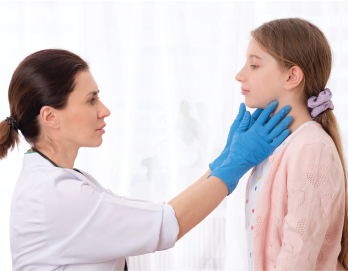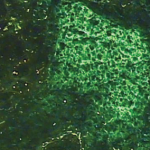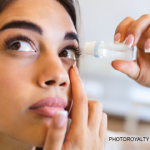
In Green / shutterstock.com
A 14-year-old girl is referred to your office for fatigue and arthralgias. While you’re obtaining her past medical history, she divulges that she has had four episodes of bilateral parotitis, each lasting two weeks. An otolaryngologist evaluated her. She lacked sicca symptoms, had a normal complete blood count (CBC), normal inflammatory markers and a negative ANA on multiplex bead assay. She was diagnosed with juvenile recurrent parotitis.
She has a normal physical examination. She denies sicca symptoms, but reports frequent vaginal pruritus.
You order labs and find a normal CBC, as well as normal inflammatory markers, urinalysis and metabolic panel. She is found to have a positive SS-A/Ro antibody on ELISA and negative dsDNA, Smith, RNP and SS-B/La. She has a positive rheumatoid factor (RF) and is hypergammaglobulinemic. She was seen by an ophthalmologist, and ocular surface staining was negative.
You decide to get a minor salivary gland biopsy. The pathologists tell you that she had a few clusters of mononuclear cells but that most of them contained fewer than 50 cells, and the resulting focus score was less than 1 focus/4 mm2.
A salivary gland ultrasound is obtained and reveals increased echogenicity, multiple parotid cysts and inhomogeneity. She does not meet 2016 ACR/EULAR criteria, but you diagnose her with Sjögren’s syndrome based on recurrent parotitis in a child with chronic sialadenitis on ultrasound and positive antibodies.1
This patient, like many children, does not have a conventional presentation for Sjögren’s syndrome. In fact, children rarely present with the classic constellation of symptoms seen in the adult population.
Diagnosis & Challenges
The adage that the eye cannot see what the mind does not know applies well to children with Sjögren’s syndrome. The first challenge to diagnosis is recognizing the disease can occur in children of any age. Sicca symptoms may be a later finding, and the lack of them should not be reassuring. Recurrent or persistent parotitis is the most common clinical feature in children. Extra-glandular manifestations frequently occur.
The second, intertwined challenge is that even when the diagnosis is considered, children often don’t fulfill 2016 ACR/EULAR criteria. This is likely due to a combination of inadequate diagnostic evaluation, challenges in performing these tests in the pediatric population (e.g., ocular surface staining), and abnormal testing that does not reach the threshold of positivity defined in adult cohorts. Certainly, if you have a patient who does meet criteria, no ambiguity exists.
We presented 144 cases of children with Sjögren’s syndrome at the 2018 ACR/ARHP Annual Meeting, with only 26% of the patients diagnosed with the disease meeting 2016 ACR/EULAR criteria.2
Pediatric-specific normative values for these diagnostic tests and pediatric-specific classification criteria are needed. Until these are developed, a perceptive clinician and persistence are often needed to make the diagnosis or be satisfied that it has been excluded.
Salivary gland ultrasonography can aid in establishing a diagnosis and has been shown to correlate with histologic and serologic changes in adults and children with Sjögren’s syndrome. However, normal salivary gland ultrasonography should not prevent getting a biopsy.

